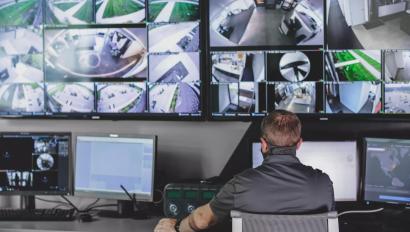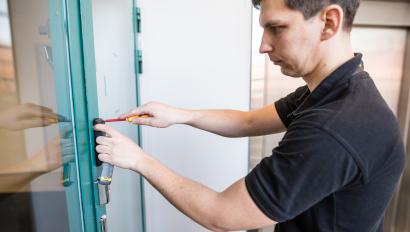Security Best Practices for Acute Care Facilities

The COVID-19 pandemic has caused many organizations to take stock and evaluate their security standards and business operations – the results of which have ranged from reduced staff to temporary shutdowns. However, acute care facilities don’t have this option.
As hospitals across the country face this incredibly challenging situation, many are taking steps to secure their facilities in new ways in order to protect their patients and staff.
Below are some best practices that are helping our customers limit exposure in their facilities. Continue reading to learn how your existing security systems can help you continue to mitigate the health and safety risks at your facility.
Enforce a Single Entrance
Access to an acute care facility should be limited to one main entrance with almost no exceptions. There is a convenience factor in having multiple entrances and exits for your patients and staff, but now more than ever it is important to limit who is in your facility and what they are bringing with them.
Aside from putting policies in place to communicate this to the staff, it’s also helpful to make changes to your door schedules in your access control system. The side door of a wing may be normally accessible to your staff during certain hours. Changing this door schedule so that staff members’ access cards no longer open these exterior doors is the first step in controlling access. Limit access to these doors to properly trained and authorized personnel only.
Another step is to monitor how often these doors are being used as exits. You won’t be able to lock them down from the inside if they are fire exit doors, but you can use door contacts or cameras at the door to alert you to the door being used as an exit. Half of the battle is creating a secure system that can protect your facility, but the other half involves buy-in from your staff. If somebody is using that side entrance because it is more convenient for their parking location, then it’s best that you are aware of it and can address it with that employee.
Limit Non-Essential Visitors
A common theme right now is limiting patient visitors. It’s not a popular decision among the loved ones of your patients, but it is a vital step in preventing further spread of the disease in your facility. Many patients do not have COVID-19, but visitors may be asymptomatic carriers and can cause a wave of issues if they’re on-site and in close contact with others.
Additionally, as people are being treated for COVID-19 in these facilities, it is critical to be aware that visitors coming in could bring contamination back out and spread it in their community. Many of our healthcare customers are limiting visitors to end-of-life or beginning-of-life events – and even then, the visitors are being closely monitored to limit exposure to other patients. Many facilities are restricting visitors by age, some banning any visitors under the age of 13.
Are you currently tracking visitors in your facility? How are you tracking arrival times, where visitors are in the facility and how long they were there? If the answer is a paper sign-in sheet at the front desk, then check out our other blog on electronic visitor management systems. Of course, be sure to also provide hand sanitizer for guests to use after signing in.
Detect and Disperse Gatherings
Limiting patients is a good way to keep large groups of visitors from congregating in your halls. Your employees are a different story. When care teams have their daily meetings, how close are they? Are you practicing social distancing at your unit huddles, or are they actual huddles with everybody close together? Are there social conversations taking place in the hallway or outside of the exit after a tough day? All of these instances are potentially threats in the current environment.
Additionally, staff have to eat; most shifts are 12 hours in acute care facilities and people need breaks. Walk through your cafeteria at lunchtime and take note of how many people are sitting at tables side by side. Are your social distancing policies outlined clearly and posted for people to see in these common areas? Make continued appeals to your staff and visitors on how important these steps are in protecting both themselves and the patients.
Healthcare workers are trained better than most people on hand hygiene and the dangers of this particular pandemic, but steps have to be taken to help them however you can. Does your video surveillance system have analytics built in that can detect and notify if a large group of people are gathering? If your surveillance system is monitored by your security team, consider putting standards in place to ask groups to disperse when this is detected.
These are a few easy steps that you can take by leveraging some of the existing security technology you likely already have in place. Following best practices and sharing them with others is one of our best weapons against COVID-19. To join the conversation, share how you and your team are taking further steps to protect your staff and patients by using #SecurityComesTogether on social media or commenting below.
Disclaimer: By using the Blog section of this website (“Blog”), you agree to the terms of this Disclaimer, including but not limited to the terms of use and our privacy policy. The information provided on this Blog is for information purposes only. Such information is not intended to provide advice on your specific security needs nor to provide legal advice. If you would like to speak to a Security representative about your specific security needs, please contact us.























